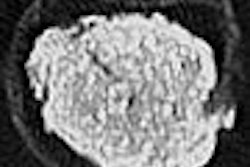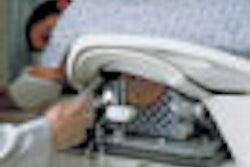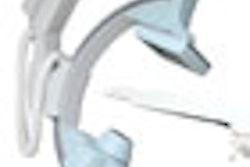A study presented at this week's Society of Interventional Radiology (SIR) meeting in Washington, DC, found that women with uterine fibroids aren't being told that uterine fibroid embolization (UFE) is a treatment option for their condition.
Researchers from WellStar Windy Hill Hospital in Marietta, GA, and Emory-Adventist Hospital in Atlanta studied a group of 105 women in the Atlanta metro area who had symptomatic uterine fibroids. The women were asked whether their gynecologist mentioned UFE as an option, and, if they were not told about UFE, they were asked how they learned of the procedure.
The researchers found that all the women were given surgery (hysterectomy or myomectomy) as an option, but only 35 women (33%) were given UFE as an option. Of these 35 women, 20 (57%) were members of health maintenance organization Kaiser Permanente, which requires its gynecologists to discuss UFE as a treatment option available for uterine fibroids.
When the Kaiser patients were excluded from the study sample, only 15 women (18%) were told about UFE as a treatment option. Of the 70 patients who were not told, 40 of them knew about UFE, and the remaining 30 did not. Of the patients who knew about UFE, the most common way they learned about the procedure was through radio advertisements and the Internet.
Despite clinical studies supporting the long-term safety and efficacy of UFE, awareness of the procedure among patients is low, the authors concluded.
"Physicians need to incorporate UFE into the treatment algorithm for patients suffering with uterine fibroids," said Dr. John Lipman, who presented the study. "The patient should not have to be the one to suggest her treatment; that is the physician's responsibility. Gynecologists need to be the ones taking the lead on this, and I applaud Kaiser Permanente's gynecologists for being the only ones in our area to consistently do this."
In a related study, researchers from Brigham and Women's Hospital in Boston studied seven patients who received focused ultrasound (FUS), a relatively new treatment for fibroids. Patients with a single large fibroid are candidates for FUS, while patients with many fibroids are best treated with UFE.
The study found that UFE can still successfully treat women whose FUS treatment had failed. Symptoms improved for all patients treated with UFE after failed FUS, according to the Brigham researchers.
Related Reading
Both UFE, hysterectomy improve quality of life, February 20, 2008
Fibroid embolization is safe, effective long-term, January 21, 2008
UFE without standard aortography cuts radiation dose, May 18, 2007
ISET talks stress imaging know-how in AAA endograft, relative safety of UFE, February 12, 2007
Uterine artery embolization for fibroids speeds recovery, January 25, 2007
Copyright © 2008 AuntMinnie.com



















